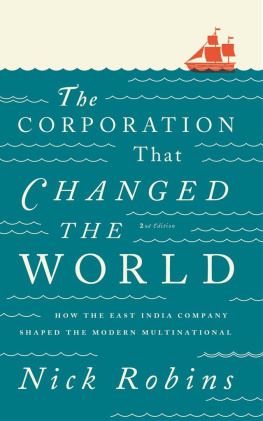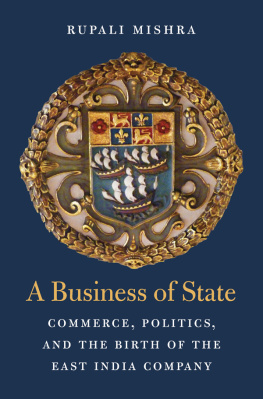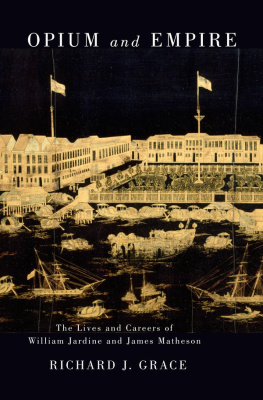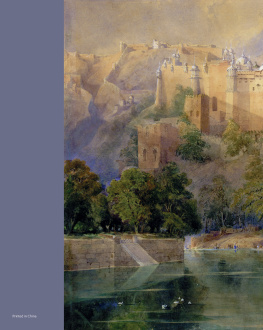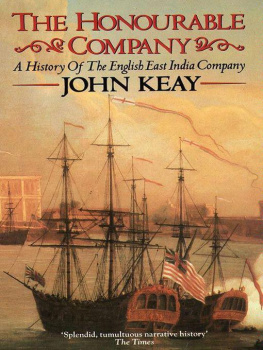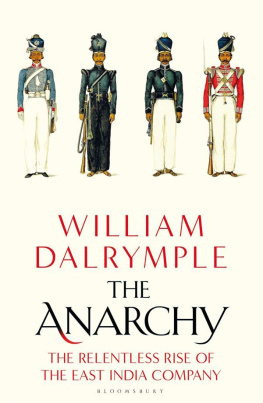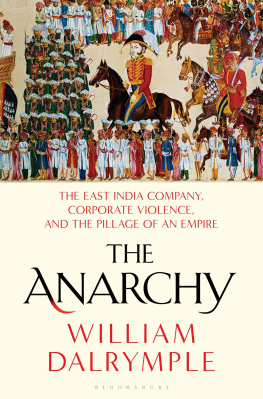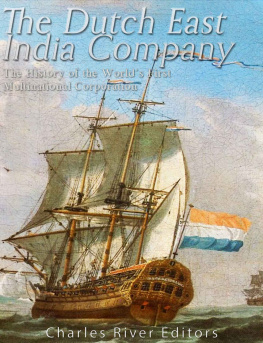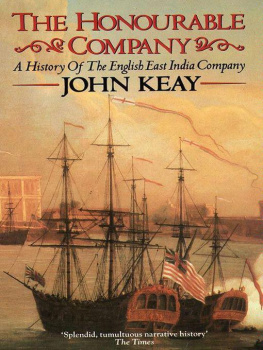The Corporation That Changed the World

First published 2012 by Pluto Press
345 Archway Road, London N6 5AA
www.plutobooks.com
Distributed in the United States of America exclusively by
Palgrave Macmillan, a division of St. Martins Press LLC,
175 Fifth Avenue, New York, NY 10010
Copyright Nick Robins 2012
The right of Nick Robins to be identified as the author of this work has been asserted by him in accordance with the Copyright, Designs and Patents Act 1988.
British Library Cataloguing in Publication Data
A catalogue record for this book is available from the British Library
ISBN 978 0 7453 3196 6 Hardback
ISBN 978 0 7453 3195 9 Paperback
ISBN 978 1 8496 4691 8 PDF eBook
ISBN 978 1 8496 4693 2 Kindle eBook
ISBN 978 1 8496 4692 5 EPUB eBook
Library of Congress Cataloging in Publication Data applied for
This book is printed on paper suitable for recycling and made from fully managed and sustained forest sources. Logging, pulping and manufacturing processes are expected to conform to the environmental standards of the country of origin.
10 9 8 7 6 5 4 3 2 1
Designed and produced for Pluto Press by Chase Publishing Services Ltd
Typeset from disk by Stanford DTP Services, Northampton, England
Simultaneously printed digitally by CPI Antony Rowe, Chippenham, UK and Edwards Bros in the United States of America
For our parents and our children
Contents

List of Tables, Figures, Maps and Illustrations

TABLES
FIGURES
MAPS
ILLUSTRATIONS
Acknowledgements

This book started with a walk, and Id like to express my appreciation to all those who came all or part of the way with me. None of this would have happened without my wife, Ritu, who was not just the inspiration for the book, but its sustainer providing the patience and encouragement that brought the journey to an end.
Jane Trowell of Platform in London co-hosted the initial East India Company walks, which have been such great sources of ideas and insights into the corporations London presence. Ive also been inspired by Muhammad Ahmedullahs work at the Brick Lane Circle and his tireless efforts to explore the Companys contemporary relevance. Satish Kumar first published my initial thoughts on the Company in the pages of Resurgence magazine, and Mari Thekaekara then suggested that it should be turned into a book. David Castle and the team at Pluto Press have been consistently supportive from beginning to end. As for the book itself, I am indebted to the Al-Furqan Islamic Heritage Foundation based at Eagle House in Wimbledon for allowing me to use its library during the summers of 2004 and 2005 to write the first edition. I wish to thank Huw Bowen for graciously allowing me to read the pre-publication proofs of his work, The Business of Empire, and Jack Greene for allowing me to quote from his Arenas of Asiatic Plunder.
Many others read have helped in a multitude of different ways, notably Belliappa, Jem Bendell, Anu Bhasin, Sushil Chaudhury, Kate Crowe, Andrea Cunningham, Rajat Datta, Sister Christine Frost, Ram Gidoomal, Caspar Henderson, Jude Holland, Hameeda Hossain, Leslie Katz, Peter Kinder, James Marriott, Malcolm McIntosh, Derek Morris, Prasannan Parthasarathi, Steven Pincus, Munro Price, John Robins, Richard Sandbrook, Rajiv Sinha, John Sabapathy, Andrew Simms, Jonathon Sinclair-Wilson, David Somerset, Sara Wajid, Halina Ward, Georgie Wemyss and Jon Wilson.
For me, this book is an attempt to grapple with the shared past of Britain and Asia, confronting the Companys legacy so that future interactions can be based on principles of justice. This book is therefore dedicated to our parents and to our children: Elizabeth and John, Pushpa and Sushil, and Oliver, Joshua and Meera.
The author and publisher would like to thank the following individuals and institutions for their kind permission to use their images in this book: Illustration 1.1: the British Library; Illustration 2.1: Museum of London; Illustration 9.1: Punch Ltd; Illustration E.1: Andrew Simms. The maps were drawn by The Argument by Design. The Agha Shahid Ali verse on page 81 is reproduced by permission of Wesleyan University Press.
The John Masefield verse on page 85 is reproduced by permission of The Society of Authors as the literary representative of the Estate of John Masefield.
Wimbledon
January 2012
Introduction

The year 2000 was the 400th anniversary of the founding of the English East India Company. It was also the year that I came to work in the City of London, where the Company had been headquartered throughout its 275-year existence. Then and now, the City forms one of the major hubs of international finance. As the new millennium opened, market euphoria was still in the air, though with hindsight the crazed dot.com bubble had already peaked on the last day of 1999. I was entering the world of socially responsible investment as this speculative surge started to implode, revealing malpractice on a scale not seen since 1929. Once started, the slide in share values kept going for three full years until prices had halved. Momentarily, there were signs of humility on the trading floors. Across the world, inquiries got under way to discover if it was just a few bad apples at Enron, Worldcom and Tyco who were to blame, or whether the entire barrel of corporate capitalism was at fault. A decade on, and a far-deeper and still unresolved crisis wracks the worlds financial markets, one that goes to the heart of the current model of globalization, exposing businesses that are too big to fail and challenging the unequal gains of corporate executives.
What are often seen as entirely novel problems are, in fact, enduring facets of global economic history, a history that the English East India Company did so much to shape. No stranger to stock market bubbles, eye-watering corruption and government bail-outs, the Company actually outstripped the excesses of the contemporary corporation by conquering nations and ruling over millions with its private army. Yet until recently this pivotal role was absent from the public memory of post-imperial Britain. I discovered this perplexing gap when I first decided to visit the site of the Companys headquarters, East India House, more than a decade ago. The building was located in the heart of the Square Mile, near Exchange Alley where jobbers had first gathered in the coffee houses to swap rumour and trade the Companys shares. From Bank, I headed east, and when I reached the corner of Leadenhall and Lime Street, where East India House had stood for over two hundred years, there was nothing no sign, no plaque, nothing to mark the fact that this was the location where the worlds most powerful corporation had once been based. In a country that is so drenched in the culture of heritage, this absence puzzled me: why had this historic Company been so completely erased from the face of London?

